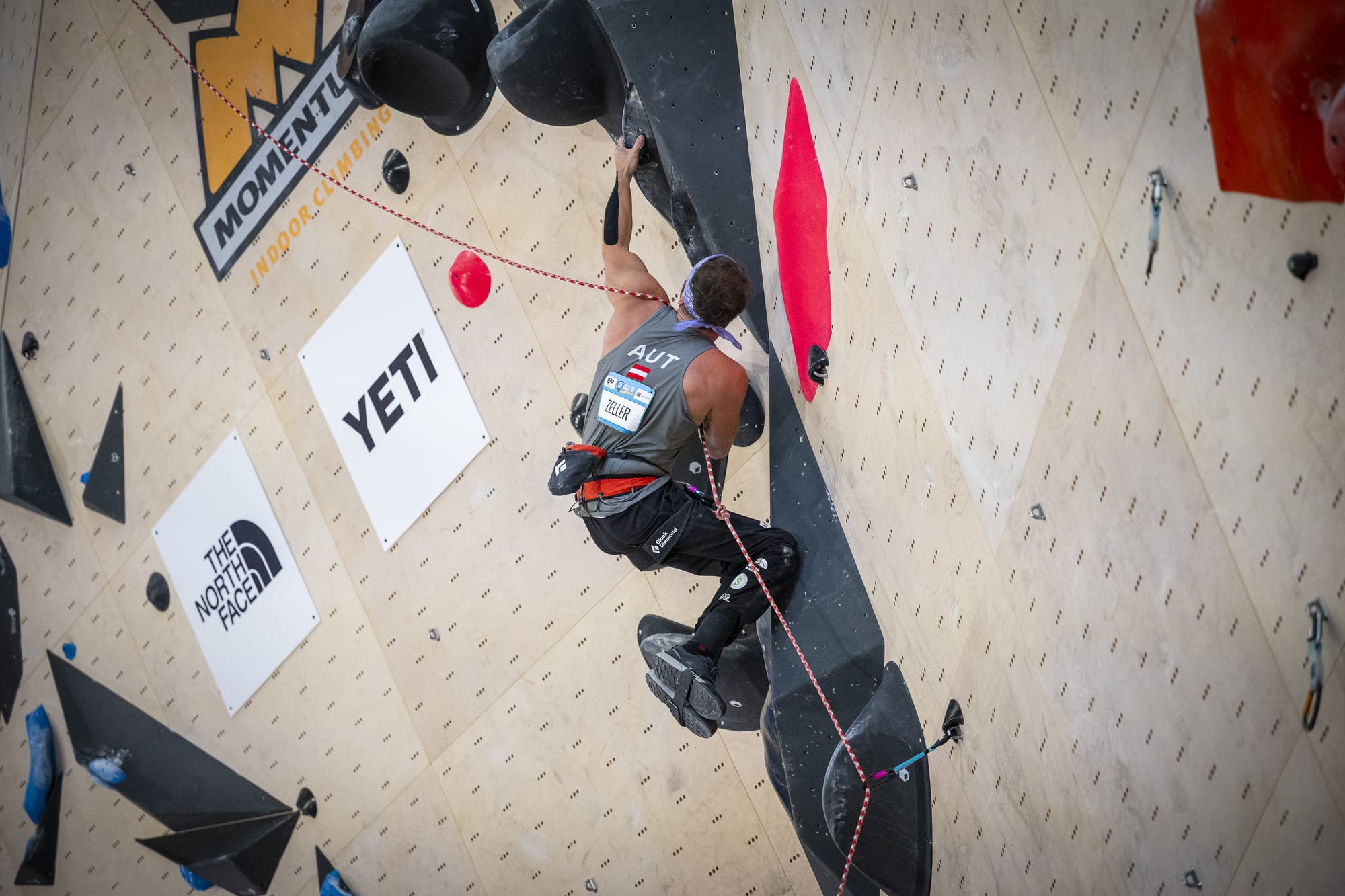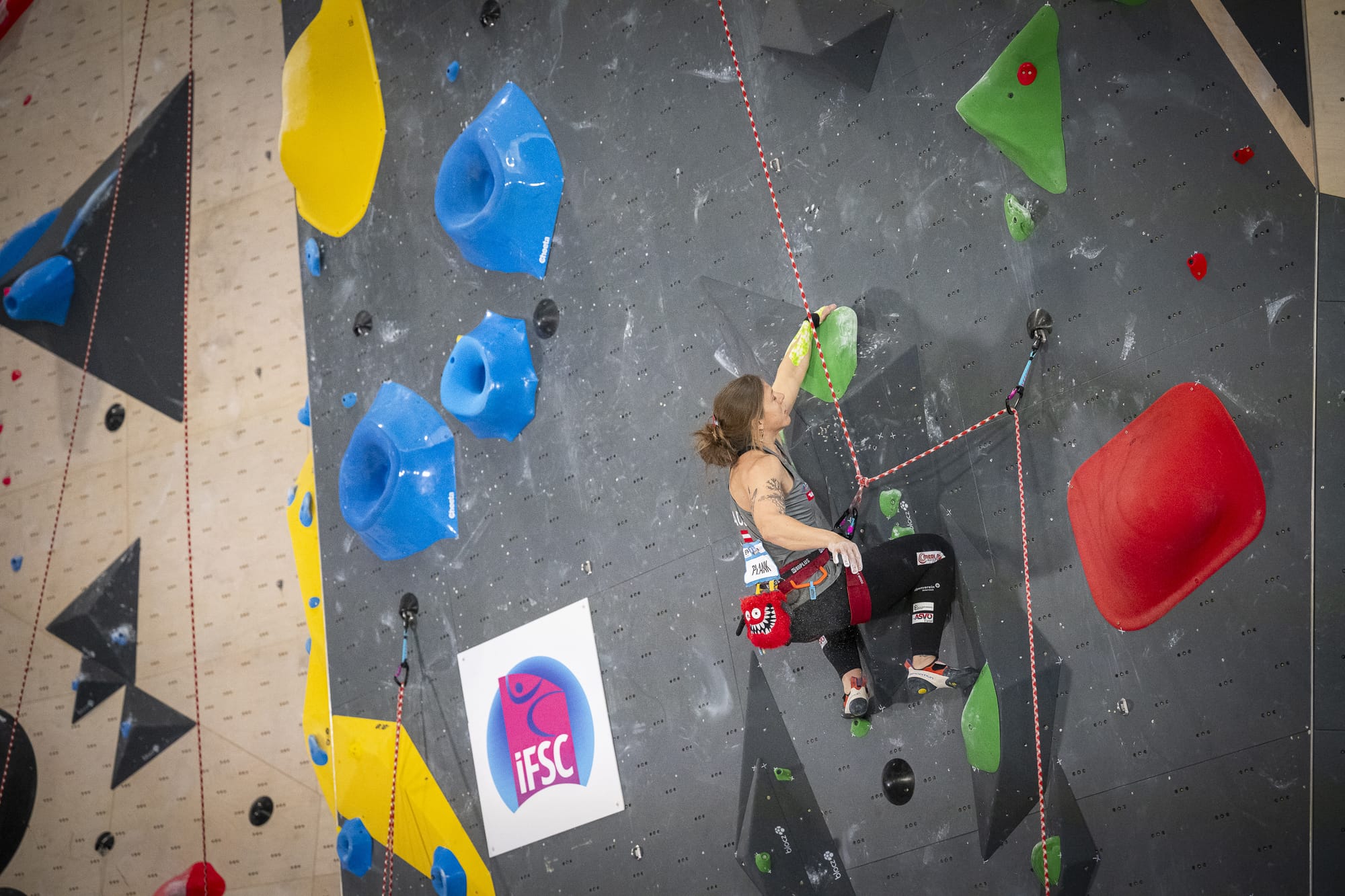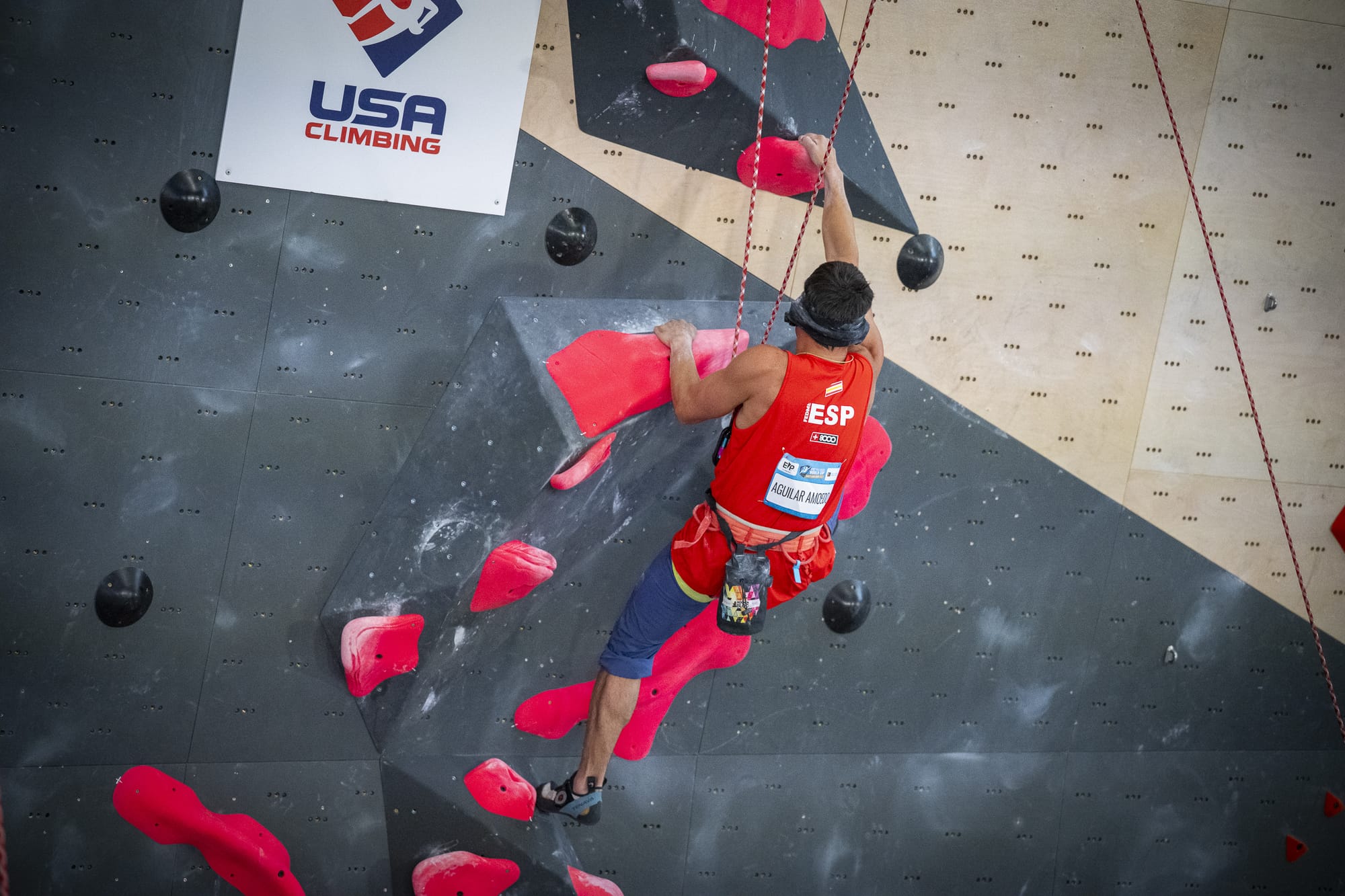The Innsbruck Para Climbing World Cup is the second World Cup of the 2025 Para Climbing World Cup series. It is also the first Para Climbing World Cup since the Paralympic category announcement, which has been greeted with elation and disappointment.
Before the World Cup, there are PI classifications running over the Saturday and Sunday beforehand. Some athletes may be ruled as not eligible or have their classification changed.
I want to give a special thanks to @paraclimbs on Instagram for helping me understand Para Climbing better. This is the first time I've covered Para Climbing, so if I get anything wrong, let me know; I'll update the article with a correction.
Para Climbing Classes
Para sports use classification to ensure that athletes with similar degrees of activity limitation resulting from the impairment compete together. The aim of classification is to minimise the impact of impairment on sports performance. Because different sports require different activities, classification is sport-specific.
In para climbing, athletes are classified into 10 classes across three main categories: visual impairment, amputee, and limited range, power, and/or mobility. The higher the number, the greater the functionality and the lower the impairment.
- Visually impaired – B1, B2, B3: These are classified by how much visual field they have. B1 are totally blind and climb with a blindfold. B2 have a visual field of less than 10%, and B3 have a visual field between 10% and 40%. Blind climbers have a sight guide to announce holds and moves.
- Upper and Lower Amputees – AL1, AL2, AU2, AU3: These athletes are classified based on the severity of the limb deficiency. For AL1, athletes who use wheelchairs because they have no usable function from the waist down. AL2 have at least one leg amputation or limb deficiency. AU2 have at least one arm with a forearm or limb deficiency. AU3 have finer impairments, but functioning wrists. There is no AU1 category as of 2023. These athletes now compete in the RP1 category.
- Range and Power RP – RP1, RP2, RP3: RP athletes have the largest range of impairments. These could include hypertonia, ataxia, athetosis, impaired passive range of motion, impaired muscle power, or short stature. The severity of the impairment can change over time, resulting in athletes moving between classes.
Each sport class must have at least four athletes in a World Cup for the class to be confirmed. Combined classes can be proposed, but only combining B2 & B3 athletes is allowed (pA-2) if the B2 sport class is below the minimum. There is also a special case for the AL1 class (p1). If there are not enough athletes in either men's or women's classes, their genders can be combined into a mixed class. Athletes need to reconfirm to compete in the mixed class.
Because of the variety of disabilities, especially in the RP categories, the routesetting can impact the outcome of the event. The IFSC provides guidance to the routesetters, including style suggestions and grade suggestions for the routes.
Who to watch out for?
There are 240 athletes registered for the Para Climbing World Cup from 27 countries, 91 women and 149 men. The biggest teams are the USA, who send 39 athletes, Germany, who send 34, and the UK, who send 22. The largest classes are AL2 for the men with 26 athletes and AU2 and RP2 for the women with 16 athletes registered.
There are four female AL1 athletes registered, so the AL1 women class will run in Innsbruck, unlike in Salt Lake City last month where the men and women were combined into a mixed AL1 class.
| Amputee – AL/AU | Range & Power – RP | Visual Impairment – B | |
|---|---|---|---|
| 1 | AL – 14 Men 4 Women |
23 Men 14 Women |
7 Men 5 Women |
| 2 | AL - 26 Men 5 Women AU - 14 Men 16 Women |
14 Men 16 Women |
18 Men 13 Women |
| 3 | AU – 12 Men 5 Women |
19 Men 15 Women |
8 Men 8 Women |
The classes in bold above are the LA28 Paralympic classes. There are 118 athletes registered across the LA28 Paralympic classes.
Amputate Categories

In the AL1 category, Angelino Zeller (Austria) is the man to watch. He has finished below 1st twice in his career since he started competing in 2018. Markus Pösendorfer (Austria) won in Arco last year but has been second 9 times over the years. On the women's side, Pavitra Vandenhoven (Belgium) has won 4 World Cups and 2 World Championships. She even came 3rd in a mixed AL1 category in SLC with 9 men and 4 women.
In AL2, Lucie Jarrige (France) has finished below 1st only twice in 9 years of competing. She has been undefeated since Briançon in 2021. Some of the top women are not competing in AL2, including Sarah Larcombe (Australia), who is recovering from injury. On the men's side, Thierry Delarue (France) has never finished below 1st in 11 competitions since he started competing in 2018. Ethan Zilz (USA) won last year and finished 3rd in Salt Lake City last month.
In AU2, the men's side is quite open. Kevin Bartke (Germany) won last year and has won 9 Para Climbing competitions since he started competing in 2017. Also look out for Brian Zarzuela (USA), who won his 4th World Cup in Salt Lake City last month. There is also Isak Ripman (Norway), the current World Champion, who finished 4th in Salt Lake City and 3rd last year in Innsbruck. On the women's side, the battle between Solenne Piret (France) and Lucia Capovilla (Italy) continues. Piret has won 16 of the 17 competitions she has competed in. Capovilla has finished 2nd 10 times but won in Arco last year.
In AU3, Rosalie Schaupert (Germany) is the woman to beat. She has won 5 World Cups, including Innsbruck last year, and is only 19. The men's side is open with the current World Champion, Mor Michael Sapir (Israel), not competing. Sapir has won 8 Para Climbing competitions, including 5 World Cups. Keep an eye on Dominic Geisseler (Switzerland), who won in Innsbruck and Arco last year.
Range & Power Categories

The men's RP1 field is a strong one. European and World Champion Aloïs Pottier (France) has never finished below 2nd in a Para Climbing competition. Kim Rishaug (Norway) won last year in Innsbruck and finished 3rd in Arco and in SLC this year. Korbinian Franck (Germany) was 2nd in Salt Lake City this year and won in Arco last year. He has won 8 Para Climbing competitions, including 5 World Cups, since he started competing in 2015. On the women's side, look out for Melissa Ruiz (USA) and Hannah Zook (USA). Zook won her first World Cup in Salt Lake City last month and Ruiz was second. Ruiz has won 3 World Cups. Other top athletes Marta Peche Salinero (Spain) and Eva Mol (Netherlands) are not competing.
In RP2, can Jasmin Plank (Austria) win her home World Cup this year? She finished 2nd in 2023 and 2024 after winning in 2022. She won her 6th World Cup in Salt Lake City last month. Chiara Cavina (Italy) won last year, in only her 2nd Para Climbing World Cup. She was 7th in Salt Lake City. Matoi Futahashi (Japan) finished 2nd in SLC in her 3rd World Cup aged 17. On the men's side, Manikandan Kumar (India) won last year in Innsbruck and came 2nd in Salt Lake City last month. Brayden Butler (USA) won his first World Cup in Salt Lake City last month. Also look out for Benjamin Mayforth (USA) who last won back in 2022 in Villars and Innsbruck, but has been second 6 times since.
In RP3, Tadashi Takano (Japan) has won the last 6 Para competitions he has entered. Also look out for the European Champion Jamie Barendrecht (Netherlands), who has won 3 World Cups. Also look out for Camille Caulier (Belgium), who has podiumed at all 3 Para Climbing competitions he has entered, including in Innsbruck and Arco last year. In the women's category, World Champion Marina Dias (Brazil) has won 3 World Cups and has never finished off the podium. Also keep a look out for European Champion Christiane Luttikhuizen (Netherlands), who won in Arco last year. Nat Vorel (USA) won last year in Innsbruck. They also won in Salt Lake City last month. All three have different disabilities: Dias has multiple sclerosis, Luttikhuizen mild cerebral palsy, and Vorel a spinal cord injury.
Visually Impaired Categories

In B1, Nadia Bredice is the favourite. She won last month in Salt Lake City and last year in Innsbruck. In the men's category, Sho Aita (Japan) is the favourite. He won his 9th World Cup in Salt Lake City last month and finished below 1st once. He has also won 6 World Championships: Bern (2023), Moscow (2021), Briançon (2019), Paris (2016), Gijón (2014), and Paris (2012). Also, look out for Francisco Javier Aguilar Amoedo (Spain). He has finished 2nd in the last 10 international Para Climbing competitions.
In B2, look out for Fumiya Hamanoue (Japan) who won his 4th World Cup in Salt Lake City last month, and Razvan Nedu (Romania) who won in Arco and Innsbruck last year. In the women's category, look out for Linda Le Bon who won last month in Salt Lake City and last year in Innsbruck. Also, look out for Seneida Biendarra (USA) who finished second in Innsbruck and Salt Lake City last year.
In B3, look out for Linn Poston (USA) who won both World Cups she has entered: Salt Lake City last month and last year in Innsbruck. Elsa Boutel Menard (France) has been second both times behind Poston. On the men's side, Cosmin Florin Candoi (Romania) has never lost a Para Climbing competition. His compatriot Daniel-Bebe-Vasilică Andrei finished second in Salt Lake City behind him.
IFSC Routesetters
- Headsetter: Maragda Gabarre (Spain)
- Aaron Davis (USA)
- Nohl Haeckel (USA)
Schedule
Monday, 23rd June
- 09:00 – 15:30 - Qualification (YouTube)
Tuesday, 24th June
- 16:30 – 21:00: Finals (YouTube)
Where to watch
You can watch the Para Climbing Final on the IFSC YouTube channel (the link will be added to the online version when they are available).
UPDATE 22 Jun 2025: A previous version of the article said that the AL1 women class may or may not run. The class will be running.
UPDATE 22 June 2025: A previous version of this article stated that different categories could be merged. This is has been updated in 2025 so that the B2 and B3 classes can be merged, and the AL1 class combined as a mixed AL1 class but no other.





